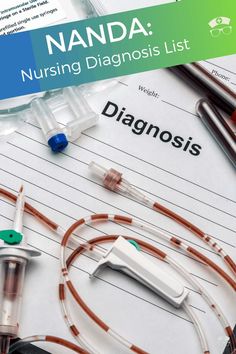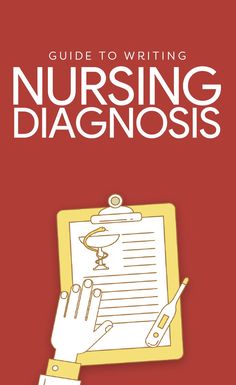Table of Contents
Introduction

The nursing process is a structured framework that guides nurses in providing safe, effective, and individualized patient care. A crucial step within this process is formulating nursing diagnoses. These diagnoses, distinct from medical diagnoses, are clinical judgments about a patient’s actual or potential health responses to their condition or life processes. Think of them as the foundation for your nursing interventions, pinpointing specific areas where your expertise can make a significant impact on a patient’s well-being. The Nursing Diagnosis Writing Guide serves as your roadmap to crafting effective nursing diagnoses, ultimately leading to improved patient outcomes and student success.
Accurate nursing diagnoses are the cornerstone of quality patient care. They not only direct your care plan but also contribute to communication and collaboration with other healthcare professionals. For nursing students, mastering the skill of writing effective nursing diagnoses translates into improved clinical judgment and ultimately, better patient outcomes. This comprehensive guide, the Nursing Diagnosis Writing Guide, serves as your companion, walking you through the steps and considerations involved in crafting clear, accurate, and well-supported nursing diagnoses.
Throughout this guide, we’ll explore the four main categories of nursing diagnoses: problem-focused (actual), risk, health promotion, and syndrome diagnoses. We’ll delve into the process of formulating a diagnosis based on patient data, unpacking the key components – the health problem, etiology, and signs and symptoms. We’ll also address the crucial distinction between nursing and medical diagnoses. By the end, you’ll be equipped with the knowledge and skills to confidently write effective nursing diagnoses using the Nursing Diagnosis Writing Guide, a vital skill for success in your nursing practice.
Types of Nursing Diagnoses
Nursing diagnoses come in four main categories, each serving a distinct purpose in guiding your care plan:
- Problem-Focused (Actual) Diagnoses: These diagnoses identify existing problems a patient is currently experiencing. Think of them as capturing the “here and now” of the patient’s situation.
- Example: Impaired Skin Integrity related to pressure injury on sacrum.
- Risk Diagnoses: These diagnoses predict potential problems a patient might develop based on their risk factors. They allow for proactive interventions to prevent complications.
- Example: Risk for Impaired Skin Integrity related to decreased mobility.
- Health Promotion Diagnoses: These diagnoses focus on a patient’s strengths and identify opportunities to enhance their overall well-being.
- Example: Readiness for Enhanced Nutrition Knowledge.
- Syndrome Diagnoses: These diagnoses describe a cluster of signs and symptoms that point towards a specific condition.
- Example: Pain Syndrome related to surgical incision.
By understanding these different types of diagnoses, you can tailor your approach to address both current issues and potential future challenges, ultimately promoting optimal patient outcomes.
Formulating a Nursing Diagnosis

The cornerstone of writing a strong nursing diagnosis lies in a thorough understanding of the patient’s condition. This requires a comprehensive nursing assessment, a systematic process of gathering data about the patient’s health status. Think of it as detective work – you’re piecing together the puzzle to identify the patient’s needs and tailor your interventions accordingly.
Common tools and techniques used in assessment include:
- Patient Interviews: Engaging in open-ended and focused conversations to gather subjective data about the patient’s history, symptoms, and concerns.
- Physical Examination: Performing a systematic head-to-toe assessment to gather objective data about the patient’s physical health.
- Review of Medical Records: Examining existing medical records to gain insights into the patient’s past medical history, current diagnoses, and medications.
Data Analysis: The Art of Putting the Pieces Together
Once you’ve collected this rich data, the magic happens in the data analysis phase. Here, you analyze the information to identify patterns, establish connections, and ultimately, uncover the patient’s strengths and weaknesses. This analysis forms the basis for formulating accurate nursing diagnoses using the Nursing Diagnosis Writing Guide framework.
Gordon’s Functional Health Patterns Assessment Framework
While not mandatory, some instructors may recommend using frameworks like Gordon’s Functional Health Patterns Assessment to guide data collection. This framework organizes the assessment into 11 health patterns, such as health perception-health management, nutritional-metabolic, and activity-exercise. Analyzing each pattern can provide valuable insights that contribute to formulating accurate and specific nursing diagnoses.
The Essential Elements of a Strong Nursing Diagnosis
Now, let’s delve into the key components of a well-written nursing diagnosis, using the Nursing Diagnosis Writing Guide approach:
- Health Problem (P): This is the core of the diagnosis, capturing the actual or potential health problem the patient is experiencing. Nursing Diagnosis Writing Guide emphasizes clarity and specificity when identifying the problem. For example, “Deficient Fluid Volume” is a more accurate problem statement than simply “Dehydration.”
- Etiology (E): Also known as “related factors,” this section identifies the underlying causes or contributing factors related to the health problem. The Nursing Diagnosis Writing Guide encourages you to explore the “whys” behind the problem. For example, the etiology for “Deficient Fluid Volume” might be “diarrhea and vomiting.”
- Signs and Symptoms (S): This section details the objective and subjective data that supports the identified health problem. Subjective data refers to what the patient reports (e.g., feeling thirsty), while objective data is based on your observations (e.g., dry mucous membranes). Nursing Diagnosis Writing Guide highlights the importance of using both types of data for a comprehensive diagnosis. (Consider including a table/template here for organizing P, E, and S).
By combining these elements, you can formulate clear and concise nursing diagnoses using the Nursing Diagnosis Writing Guide framework. For example: “Deficient Fluid Volume related to diarrhea and vomiting as evidenced by dry mucous membranes, decreased urine output, and self-reported thirst.”
Distinguishing Between Nursing Diagnoses and Medical Diagnoses
It’s crucial to differentiate between nursing diagnoses and medical diagnoses. Nursing Diagnosis Writing Guide clarifies this distinction. A medical diagnosis identifies a specific disease or condition, often based on laboratory tests or imaging studies. For example, a medical diagnosis might be “Pneumonia.” In contrast, a nursing diagnosis focuses on the patient’s response to the medical condition. The Nursing Diagnosis Writing Guide approach emphasizes how nursing diagnoses address the patient’s experience of the illness. For example, a corresponding nursing diagnosis might be “Ineffective Airway Clearance related to thick mucus secretions secondary to pneumonia.”
By understanding these core elements and the distinction between nursing and medical diagnoses, you’ll be well-equipped to formulate accurate and effective nursing diagnoses using the Nursing Diagnosis Writing Guide framework, paving the way for successful care planning and improved patient outcomes.
Writing Effective Nursing Diagnoses: Mastering the Art of Clarity and Accuracy with the Nursing Diagnosis Writing Guide
Having a solid foundation in formulating nursing diagnoses is crucial, but the journey doesn’t stop there. The Nursing Diagnosis Writing Guide emphasizes the importance of crafting these diagnoses in a way that is both clear and effective. Here are key principles to elevate your nursing diagnosis writing using the Nursing Diagnosis Writing Guide:
- Clarity and Conciseness: Strive for simplicity and avoid jargon. The Nursing Diagnosis Writing Guide encourages using language that is readily understood by both healthcare professionals and patients. A well-written diagnosis should be easily grasped at a glance.
- Accuracy and Specificity: Ensure your diagnoses accurately reflect the patient’s unique situation. The Nursing Diagnosis Writing Guide promotes avoiding generic terms. Instead, use specific details that paint a clear picture of the patient’s problem.
- Standardized Language: The Nursing Diagnosis Writing Guide recommends utilizing standardized language from established nursing diagnosis taxonomies, such as those developed by the North American Nursing Diagnosis Association (NANDA). This ensures consistency and facilitates communication across healthcare settings. Using standardized terminology also makes it easier to locate relevant research and interventions.
Putting Theory into Practice: Examples of Effective Nursing Diagnoses

Let’s see how the Nursing Diagnosis Writing Guide principles translate into action with some well-written nursing diagnoses for common scenarios:
Problem-Focused Diagnosis:
- Impaired Skin Integrity related to pressure injury on sacrum, Stage II (NANDA-I) as evidenced by reddened, non-blanching skin over the sacrum. (This diagnosis clearly identifies the problem, related factors, and supporting signs using standardized terminology from NANDA-I).
Risk Diagnosis:
- Risk for Impaired Oral Mucous Membrane Integrity related to nasogastric tube placement (NANDA-I) as evidenced by dry, cracked lips. (This diagnosis identifies a potential problem based on a risk factor and supporting evidence).
Health Promotion Diagnosis:
- Readiness for Enhanced Peripheral Perfusion Knowledge as evidenced by expressed interest in learning about foot care techniques for diabetics. (This diagnosis focuses on the patient’s strengths and a potential opportunity for education).
Syndrome Diagnosis:
- Pain Syndrome related to surgical incision on right knee (NANDA-I) as evidenced by verbal report of pain (7 out of 10 on a numerical pain scale) and guarding behavior when attempting to ambulate. (This diagnosis describes a cluster of signs and symptoms associated with a specific condition).
By applying the principles of the Nursing Diagnosis Writing Guide, you can formulate clear, concise, and accurate nursing diagnoses that effectively guide your care planning interventions and ultimately improve patient outcomes.
Additional Considerations for Effective Nursing Diagnoses with the Nursing Diagnosis Writing Guide
While mastering the core components and principles of writing nursing diagnoses is essential, the journey doesn’t end there. Here are some additional considerations to ensure your Nursing Diagnosis Writing Guide remains a valuable tool throughout your nursing practice:
Collaboration with Other Healthcare Professionals
Nursing is a collaborative field, and effective care planning hinges on teamwork. The Nursing Diagnosis Writing Guide emphasizes the importance of considering the patient’s medical diagnosis alongside your nursing diagnoses. Communicating effectively with physicians and other healthcare professionals allows for a comprehensive understanding of the patient’s condition and facilitates the development of a holistic care plan.
For example, a patient with a medical diagnosis of “pneumonia” might have a corresponding nursing diagnosis of “Ineffective Airway Clearance” formulated using the Nursing Diagnosis Writing Guide. Collaboration ensures that both the underlying medical condition and the patient’s response to it are addressed effectively.
Ongoing Assessment and Evaluation
The human body is a dynamic system, and a patient’s condition can evolve rapidly. The Nursing Diagnosis Writing Guide underscores the importance of ongoing assessment and evaluation. As you gather new data, your nursing diagnoses may need to be revised to reflect the patient’s current state. This ensures that your interventions remain relevant and tailored to the patient’s evolving needs.
Resources for Further Learning
The world of nursing diagnoses is vast and ever-evolving. There’s always more to learn and explore. The Nursing Diagnosis Writing Guide encourages you to delve deeper by referencing the following resources:
- North American Nursing Diagnosis Association (NANDA): https://nanda.org/publications-resources/publications/nanda-international-nursing-diagnoses/ (Provides the standardized language and taxonomy for nursing diagnoses)
- Nursing Diagnosis Handbook with Nursing Interventions: This comprehensive resource offers detailed explanations and interventions for various nursing diagnoses.
- Online Nursing Journals: Stay updated on the latest advancements in nursing diagnoses by exploring online journals like the Journal of Nursing Diagnosis & Classification.
By incorporating these additional considerations, you can leverage the Nursing Diagnosis Writing Guide throughout your nursing career, ensuring your diagnoses remain accurate, collaborative, and adaptable to the ever-changing needs of your patients.
Conclusion
This guide has equipped you with the knowledge and tools to excel in writing effective nursing diagnoses. Remember, the key takeaways are:
- Comprehensive assessment forms the foundation for accurate diagnoses.
- Clarity, accuracy, and standardized language are essential for clear communication.
- Differentiating nursing diagnoses from medical diagnoses ensures a holistic understanding of the patient’s situation.
Now it’s time to put your newfound knowledge into practice! Actively engage in formulating diagnoses for various patient presentations. The more you practice, the more confident you’ll become in crafting clear and concise nursing diagnoses using the Nursing Diagnosis Writing Guide.
Effective nursing diagnoses are the cornerstone of quality patient care planning. They serve as a roadmap, guiding your interventions towards improved patient outcomes. Embrace this challenge, and remember, with each accurate diagnosis you write, you’re making a significant contribution to the well-being of your patients.
Ready to embark on your journey to mastering nursing diagnoses? Dive into this guide and unlock the power of accurate diagnoses for exceptional patient care!







